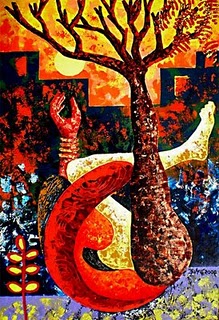| Revision as of 20:13, 2 March 2006 editGamahucheur (talk | contribs)529 editsNo edit summary← Previous edit | Revision as of 15:59, 4 March 2006 edit undoGamahucheur (talk | contribs)529 editsmNo edit summaryNext edit → | ||
| Line 25: | Line 25: | ||
| (These were collected as ''They'' (]) by Robert Reginald and Douglas Menuille.) | (These were collected as ''They'' (]) by Robert Reginald and Douglas Menuille.) | ||
| In ], ''Window Curtains'' (]), an otherwise unrelated tale |
In ], ''Window Curtains'' (]) by Timothy Shay Arthur, an otherwise unrelated tale of embezzlement, was reissued as ''“Me” Or the Story of the Window Curtains – A Companion to “She”'', and falsely attributed to Haggard. | ||
| ==External link== | ==External link== | ||
Revision as of 15:59, 4 March 2006

She is a novel by H. Rider Haggard, first serialized in The Graphic from October 1886 to January 1887. In reprints it was extraordinarily popular in its day, and it has remained in print to the present (2006).
It recounts the adventures of an expedition to an unexplored part of East Africa, where they find Ayesha, a beautiful and apparently immortal sorceress, who claims the expedition's leader as the reincarnation of her long-dead beloved. (Haggard gives a phonetic render of “Ayesha” as “assha”.) She had become ageless and perfectly beautiful more than 2 millennia earlier by immersing herself in a magic flame; she presses the expedition leader now to immerse himself as well.
This character was supposedly inspired by the Balobedu Rain Queen Masalanabo Modjadji.
The title is short for "She Who Must Be Obeyed", a translation of the Arabic honorific used for Ayesha by the Amahagger, a tribe whom she has enslaved. (The phrase acquired additional significance in British popular culture as the name by which John Mortimer's character Horace Rumpole refers to his wife.)
In the original novel, Ayesha is to great extent selfish and amoral, caring very little for the feelings or even the lives of others so long as she gets what she wants. However, it is evident that, in the course of writing the novel, Haggard moved away from a purer conception of feminine evil. Indeed, one sees the process of transition fossilized in this sentence from the chapter entitled “Ayesha Unveils”:
- I have heard of the beauty of celestial beings, now I saw it; only this beauty, with all its awful loveliness and purity, was evil — at least, at the time, it struck me as evil.
In sequel Ayesha (1905) and in prequels She and Allan (1921) and Wisdom's Daughter (1923), Haggard attempted to vindicate her character, and she comes more to resemble the elder Irene of George MacDonald's The Princess and the Goblin and The Princess and Curdie.
She has been adapted to film at least nine times (as La Colonne de feu in 1899 and as She in 1908, 1911, 1916, 1917, 1925, 1935, 1965, and 2001, with a dubious further claimant by that title in 1982). The 1925 silent version, starring Betty Blythe, was produced with the active participation of Haggard. The 1935 black and white version, starring Helen Gahagan, Randolph Scott and Nigel Bruce, is set in the Arctic rather than in Africa, and depicts its ancient civilization in an Art Deco style, with music by Max Steiner, and with convincing (for the time) scenes of destruction. It lost a great deal of money and ended Gahagan's film career. Some critics, nonetheless, say that this version is artistically superior to the 1965 Hammer Horror color version, set in Africa, which starred Ursula Andress as Ayesha and John Richardson as her reincarnated love, with Peter Cushing and Bernard Cribbins as other members of the expedition. This version was followed by a 1968 sequel The Vengeance of She (alternately “The Return of She” or “Ayesha: The Return of She”), which bears little resemblance to Haggard's work, and was novelized by Peter Tremayne (as The Vengeance of She).
In addition to Tremayne's book, there are at least two other alternate tales of of Ayesha. The first being King of Kor or She's Promise Kept, a Continuation of the Great Story of She (1903) by Sidney J. Marshall. The second being Journey to the Flame (1985:11/01) by Richard Monaco. Further, She was rewritten as H. Rider Haggard's She (1949) by Don Ward for Dell.
Haggard's She was lampooned by four works in 1887:
- He by Andrew Lang and Walter Herries Pollock
- He, A Companion to She, Being a History of the Adventures of J. Theodosius Aristophano on the Island of Rapa Nui in Search of His Immortal Ancestor by John de Morgan
- He (“by the Author of It, King Solomon's Wives, Bess, Much Darker Days, Mr. Mortons Subtler and Other Romances”) by an unknown author
- It, A Wild, Weird History of Marvelous, Miraculous, Phantasmagorial Adventures in Search of He, She, and Jess, and Leading to the Finding of It; A Haggard Conclusion by an unknown author
(These were collected as They (1978) by Robert Reginald and Douglas Menuille.)
In 1887, Window Curtains (1880) by Timothy Shay Arthur, an otherwise unrelated tale of embezzlement, was reissued as “Me” Or the Story of the Window Curtains – A Companion to “She”, and falsely attributed to Haggard.